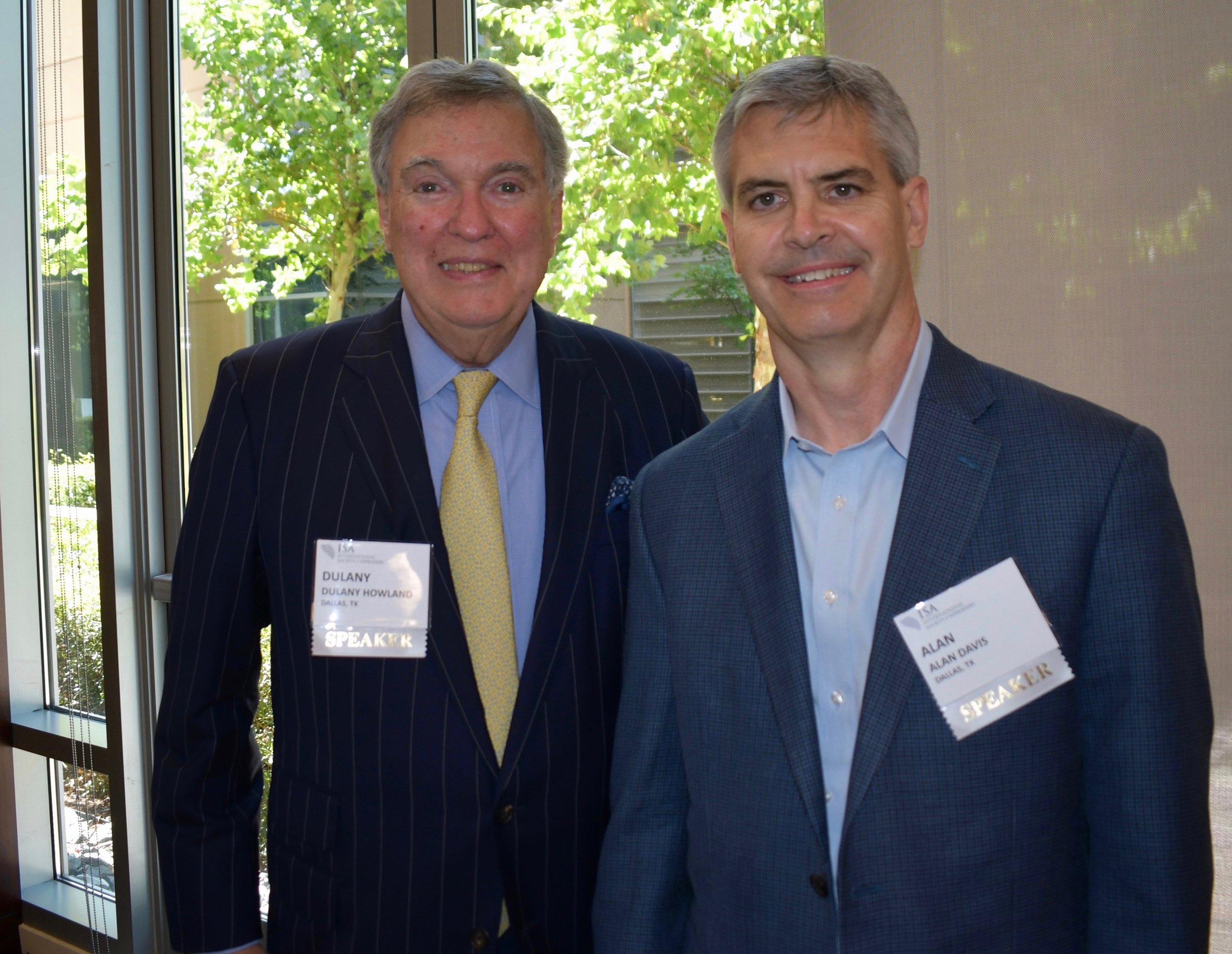I spent two days last week in a seminar sponsored by ISA dealing with the specialized needs of High-Net-Worth Individuals. The speakers were representatives of various businesses who offer services targeted for this class of clientele and who coordinate getting their appraisal needs met. As you might imagine, this small percentage of the population makes up a considerable proportion of our clientele at Signet Art; we work with individuals, museums, attorneys, shipping companies, insurance carriers and adjusters. Although we are available to help individuals with their questions about art of any value and collections of any size, our larger projects come from those who have been collecting for some time and have amassed a collection of considerable size and value. Collectors in this category are going to need more services and often very different services than the average collector.
Perrie Guthrie, Kathryn McGill, Brenda Simonson-Mohle, Barbara Chamberlain, Kim Kasten
Some High-Net-Worth Individuals want to use their money to benefit future generations. Our first speaker decided to do just that. J.P. Bryan is a life-long collector of books, Texana and western art. Western history is a deep passion of his and he began to collect in the area as far back as his college days at the University of Texas in Austin. He decided several years ago to make his fabulous collection available to the public. In 2013, he purchased the historic building that had been the Galveston Orphans home for almost 100 years. In 2015, after two years of restoration and renovation, the Bryan Museum opened to the public. Mr. Bryan and Joan Marshall, the Director of the Museum, were the first speakers at our seminar. Mr. Bryan spoke about his passion for the various collections and the importance of maintaining the love of art. Ms. Marshall spoke about some of the challenges unique to housing a museum in an historic building not purpose-built for that use, including security of the art, adequate storage facilities and other challenges that arose while transforming a former orphanage into a modern museum. The collection uses both fine art and the collectibles of daily life to tell the history of Texas and western expansion. If you haven’t visited the Bryan Museum, plan a trip to Galveston soon!
Bryan Museum (Interior and Exterior Views)
Rebecca Lawton, a longtime curator at the Amon Carter Museum, discussed the role of a curator in working with potential donors to a museum and connecting donors with appraisers qualified to provide the appraisals needed for a charitable donation deduction
Abigail Rosen, an attorney with Winstead PC-Dallas, TX, whose practice focuses on tax litigation, gave a primer on communication and record keeping that will preserve attorney-client privilege and the importance of including all the IRS-stipulated requirements in an appraisal so the timeframe of the statute of limitations is not extended for noncompliance.
Michael Brandstetter and Dan Rockwell of Displays Fine Art Services gave us some insights on all the services they offer that cover the logistics of owning, shipping, storing and displaying fine art. When a work is purchased, it must be packed, shipped and safely installed at the collector’s home. When items are sent for auction, the same services are needed. Seasoned collectors realize that their pieces are at their highest risk while being moved and installed and insist such services be handled by specially-trained professionals. Displays FAS also has a large warehouse space for collections storage. As an appraiser, I have become very familiar with DFAS and a few of their competitors since my clients often have items professionally stored with them. I am always grateful for the professionalism toward the art and courtesies shown to me when I need to do an inspection for a client or arrange for packing and shipping.
Displays Fine Art Services has become the go-to business for dealing with monumental sculpture. They have years of experience in the area and handle all the needs for the Nasher collection and the Nasher Sculpture Center. These include transportation and installation of sculptures, onsite restoration and repairs, storage of items and more.
Day two of the seminar started out with Dulany Howland, President of Howland Advisory LLC, giving an introduction to working with family offices. The term ‘family office’ was coined in the 1950’s when wealthy families first began to set up their own private offices to handle all the business and investment matters for various generations of family members. Family offices handle the business affairs, investment needs, tax filings and personal needs of wealthy families. In addition to private family offices, a hybrid has sprung up in the last 30 years, a multiple family office. Advisory firms, such as Mr. Dulany’s, offer family office services to a small group of clients and their families. Such advisors need a wide-ranging background that includes financial knowledge, business acumen, incredible people skills and a list of the best-qualified service providers in any field where their clients might need services. I have worked with a client of Mr. Dulany who had a fabulous collection of contemporary art and enjoyed hearing him describe his role with his clients.
Monica Egert Smith (Communities Foundation) and Dulany Howland (Howland Advisory Group)
Monica Egert Smith represented the Communities Foundation and spoke about its role as a donor-advised charitable fund. Donor advised funds allow High-Net-Worth Individuals to easily contribute large amounts to a charitable fund, invest the fund for growth and set up a granting plan for the various organizations and causes they care about. Personal Property Appraisers are occasionally needed because some individuals wish to donate their treasured collections to charitable organizations through the Communities Foundation.
Dulany Howland (Howland Advisory Group) and Alan Davis (Meadows Collier Attorney at Law)
Alan Davis, an Attorney and CPA with Meadows Collier, who specializes in helping HNWIs set up trusts, does their estate planning and estate settlement, quickly reviewed case law regarding personal property includable in a person’s estate. There are different reasons an attorney representing a HNWI might need an appraisal on behalf of their client. A well-trained appraiser needs to know the intended use of the appraisal and needs to prepare the appraisal using IRS-required standards so that a deduction of taxes for a charitable gift is not disallowed and so that estate or trust matters are settled in a timely fashion.
Greg Morse (Worthington National Bank)
Greg Morse of Worthington National Bank spoke to the group about banks that loan money using art collections as collateral. Such banks are rare in Texas but have become fairly commonplace in New York. When called to work on such leveraging of art for cash, an appraiser needs to be savvy enough to understand the type of value being sought—usually marketable cash value or orderly liquidation value, and needs to be completely independent from either party. Mr. Morse’s talk was a good introduction of the topic.
Barbara Chamberlain (AIG)
The final speaker for the seminar—last, but certainly not least, was Barbara Chamberlain of AIG. Ms. Chamberlain is the Director of Collection Management. From that lofty position, she helps HNWIs look at the safety of their collections and insurance needs. She works with families that have multiple homes and routinely move their jewelry, their artwork and other personal items between locations. While most homeowners carry insurance on their homes that includes a small percentage of coverage for personal property, HNWIs may need to add Private Collections Insurance. Such coverage is much more comprehensive protection against loss. It usually covers natural disasters such as windstorm, earthquake, etc. Diminution of value is also covered.
So, if there is a damage claim and repairs have been completed, an assessment is made whether there has been a loss of value due to the damage, in that case compensation can be made. There is usually no deductible and some policies offer up to 150% payments of the value stated on the policy if the value had appreciated since the last appraisal.
High-Net-Worth Individuals have more complex financial needs than the average person. A whole industry of various providers has grown up around serving those needs. With 25+ years of experience as a fine art appraiser and the highest level of accreditation, I am often called in to meet the appraisal needs of such individuals. It is always a pleasure and privilege to be of service whenever we get that call. This seminar was time well spent, networking with the best and deepening my knowledge of how to be of service. My approach to life and to business is ABL/ ABS…Always Be Learning/ Always Be Serving!
Brenda
A few of the fine Appraisers of NTISA









